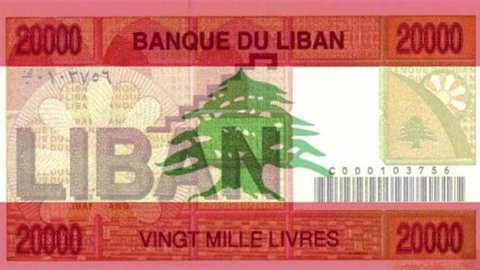The focus of the Intesa Sanpaolo Studies and Research Service presents the Lebanese economy as small but very open, where trade is equal to 135% of GDP. Because of lack of raw materials and a small manufacturing base, records a high trade deficit, partly balanced by income from services, especially tourism, and remittances from migrant workers. From a financial point of view, the substantial capital inflows represented by FDI and bank deposits allow for support a high public debt.
In the last two years the rate of growth of the economy has slowed down sharply. Unfortunately, the quality and timeliness of macroeconomic statistics they are poor. The Central Bank provides a indicator that measures the economic situation based on eight variables: electricity production, imports of petroleum products, passenger flow at the airport, demand for cement products, imports and exports, cashed checks and money supply. The value of this indicator decreased to 230 in August 2012, compared to 266 at the end of 2011, while the average trend value was equal to 236. In the first eight months of 2012 the demand for cement (-7,9%) and for area interested in building permits (-14,1%) report a significant fall of the construction industry. This year the electricity generation recorded a drop of 12,5%, due to interruptions in the activity of obsolete plants, due to low investments. Without forgetting that the Lebanese economy is weighed down by fluctuations in the prices of energy resources.
Il port of Beirut represents a commercial and financial catalyst, in particular for neighboring countries that do not border the Mediterranean, such as to increase the Lebanese commercial performance by 7,6%. According to IMF estimates, around 40% of the stock deposits is from non-residents, suggesting that political uncertainty has not affected confidence in the soundness of the financial system. From this point of view, Lebanon presents a limited commercial and financial exposure to the EU, destination of less than 10% of exports and source of about a quarter of tourists, greatly limiting the consequences of the European situation in the region. On the other hand, the links with i are very solid MENA countries, in particular with the economies of the Gulf, where the majority of remittances, tourist flows and investments come from, and to which 40% of exports are directed. Official trade and tourist flows with Syria are limited, despite it represent an important transit area of trade and tourist flows between Lebanon, Jordan, Turkey and the Gulf countries. It is therefore appropriate to assume that there is alarge network of unofficial exchanges which circumvents the limitations imposed on Syria by international institutions.
Lebanese monetary policy is constrained by currency peg to the dollar. The Central Bank maintains a high differential between interest rates on the lira and on the dollar to encourage the inflow of capital and the accumulation of reserves. This year the rate on deposits amounted to an average of 5,77%, slightly down on 2011 (5,88%). In the first nine months of 2012, deposits with commercial banks grew by 5,3%, but the component in local currency recorded a growth rate (8,7%) higher than that in foreign currency (3,4%), denoting greater confidence in the country's financial stability. Despite, therefore, the rating agencies evaluate Lebanon's sovereign debt as highly speculative, the peg to the dollar is ensured by the large foreign exchange reserves of the Central Bank and commercial banks. These would be put in difficulty by a possible fall in the exchange rate, since they hold a large portion of the public debt in lira, while on the liabilities side they have a large portion of funding in foreign currency. Public debt is, in fact, substantial, equal to 134% of GDP in 2011, of which just under 40% in foreign currency. Local investors hold almost all public debt in local currency and 80% of that in foreign currency. This high percentage in the hands of domestic investors implies contained risks of contagion from international financial crises. However, it must be emphasized that the commercial banks support their purchases of securities with deposits which for a significant portion are from non-residents, whether Lebanese or foreign. On the one hand, the debt burden commits almost 50% of state revenues and makes them public finances extremely vulnerable to interest rate dynamics and economic growth, therefore to the strategies of the investors. On the other hand, the public debt is largely absorbed by the domestic banking system which, even in periods of greater instability, has seen an increase in the collection of securities both from residents and from foreign investors. At the same time, the Central Bank, thanks to large financial surpluses, has accumulated substantial foreign exchange reserves which ensure adequate coverage of foreign financing commitments, imports and the credibility of the currency peg to the dollar, essential for the stability of the financial system.





